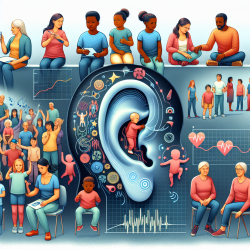Introduction
In the rapidly evolving field of Natural Language Processing (NLP), the importance of understanding and mitigating bias cannot be overstated. As practitioners working with children, it is crucial to ensure that the tools and systems we use are fair and equitable. The research article "Five Sources of Bias in Natural Language Processing" by Dirk Hovy and Shrimai Prabhumoye provides an insightful exploration of where bias can occur in NLP systems and offers strategies to address these biases.
Understanding the Sources of Bias
The article identifies five primary sources of bias in NLP systems:
- Data: The data used to train NLP models can inherently carry biases present in the real world. For example, if a dataset predominantly features one demographic group, the model may not perform well for underrepresented groups.
- Annotation Process: Bias can be introduced during the annotation process, where human annotators may unconsciously apply their own biases to the data.
- Input Representations: The way data is represented in models can also introduce bias. Certain words or phrases may be encoded in ways that reflect societal biases.
- Models: The algorithms and architectures used in NLP can amplify existing biases if not carefully designed and tested.
- Research Design: The conceptualization and design of research studies can lead to biased outcomes if not approached with a critical eye towards fairness and inclusivity.
Strategies for Mitigating Bias
To create more equitable NLP systems, practitioners can implement several strategies based on the findings of Hovy and Prabhumoye:
- Diverse Data Collection: Ensure that datasets are representative of the diversity in the population. This can involve collecting data from various demographic groups to provide a balanced training set.
- Bias-Aware Annotation: Train annotators to recognize and minimize their biases. Use multiple annotators from diverse backgrounds to cross-validate annotations.
- Equitable Input Representations: Employ techniques such as debiasing word embeddings to reduce the impact of biased input representations.
- Model Auditing: Regularly audit models for biased behavior. Use tools and frameworks that test for fairness and adjust models accordingly.
- Inclusive Research Design: Design research studies with inclusivity in mind. Consider the potential impacts of bias at every stage of the research process.
Encouraging Further Research
While the strategies outlined above provide a starting point, ongoing research and development are crucial to fully address bias in NLP. Practitioners are encouraged to stay informed about the latest advancements in the field and contribute to research efforts. Collaborating with experts in sociolinguistics and ethics can provide valuable insights into creating more equitable systems.
Conclusion
By understanding and addressing the sources of bias in NLP, practitioners can improve the outcomes of the children they serve. Implementing data-driven, unbiased NLP systems can lead to more effective and fair communication tools. As we continue to advance in this field, let us remain committed to equity and inclusivity.
To read the original research paper, please follow this link: Five sources of bias in natural language processing.










